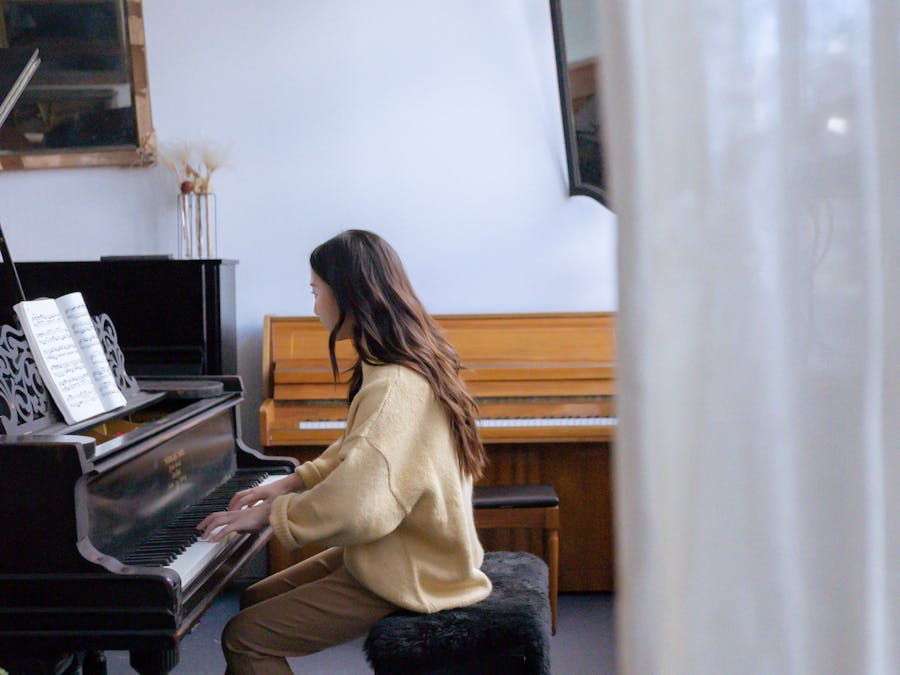 Piano Guidance
Piano Guidance
 Piano Guidance
Piano Guidance

 Photo: Luriko Yamaguchi
Photo: Luriko Yamaguchi
The short answer to that last question is: YES! It's perfectly acceptable and normal for a pianist to look at their hands while they play. An important part of the design of any musical instrument is the necessary range of movement for the player in order to produce sound.

Adults have a different way of learning the piano than children. Adults who start playing the piano need to be aware that they aren't actually...
Read More »
In and of itself, it's not a full teaching tool. Yet, Rocksmith, and similar tools, can be excellent ways to practice, motivate, and engage with...
Read More »
The most common keyboard sizes are Full-Sized (104 key), TKL (87 key), and 60% (68 key). Each size is unique with different features. There are...
Read More »
A study from MIT confirmed it: people with ADHD performed better in a driving simulation when using a stick shift. Driving a stick shift forces you...
Read More »When a piano player moves their hands across the 4 feet of the keyboard length, there are generally two types of movement happening, and the way you handle them depends upon the distance between the notes. This distance between notes is referred to as an “interval” in music. The first type of movement happens when the interval between one note and another is on the smaller side. This would be when you are able to reach from the current key to the next key without having to pick up your hand. This occurs when notes are not very far apart horizontally on the keyboard: usually the distances of less than 7 keys away are within reach for an average sized pianist’s hand. In this case, the pianist memorizes the specific distance (called an “interval”) between two notes. A proficient pianist can extend their hand (or compress their hand) to those closer intervals without looking. The second type of movement requires that the line is broken: the next note cannot simple be reached by stretching or extending your hand. In this case, the pianist must lift their hand up and move it to a different location. It’s important to be able to see where to land, so the pianist will often look down at their hand in this case. Do pianists look at their hands while they play? It depends upon the musical style! A piano score can have a lot of variety. How often the notes are “out of reach” would affect how often a pianist looks at their hands while they play. Baroque keyboard music, such as a Bach Fugues or Inventions, tend not to have a lot of large skips in the melody. This means that a pianist could potentially get away with looking at their hands less often because it requires less position changes. On the other hand, music from the Romantic period – such as music written by Chopin or Liszt – often has much larger leaps in both hands. This requires the pianist to look down much more often to ensure accuracy! Remember, there are also two hands to watch at the same time! This can complicate things a lot. If you play the lowest piano key with your left hand and look at it, you will not be able to see the keys in the middle and high register, and chances are that your right hand needs to be playing there at the same time.

C minor and E flat major start on different notes, but have the same key signature. C minor is the relative minor of E flat major.
Read More »
Explanation: The answer to the riddle is A lobster. Lobsters are naturally a dark blue/black in colour, when in the sea, but then it turns into the...
Read More »
Lisa Marie Presley Lisa Marie Presley is a curiosity. Famous from birth, she is rock's only real princess. Her face is a stunning combination of...
Read More »
When executed correctly, lock bumping is effective in nearly 90 percent of all cylinder-type locks produced today. Perhaps one of the most...
Read More »
The biggest question many people have when it comes to keys being duplicated by a locksmith are the keys labeled as "Do Not Duplicate". These keys...
Read More »
Guitar is easier for adults to learn because it is less challenging to learn songs at the beginner level. Piano, however, is easier for younger...
Read More »